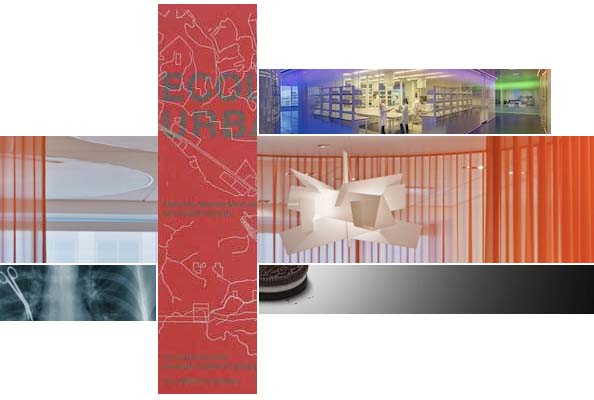Cannon tells us where science is headed. Perkins+Will on the telecommuting debate. Design schools and future cities in The Dirt. Luckett + Farley and achieving the best medical outcomes. Oreo's social media campaign extends the cookie vs. creme debate.

Where is science headed? Mark Whiteley, global science and technology practice leader at Cannon Design, published the article “Top Ten Trends For Design Led Science in 2013,” in the Huffington Post, which examines the direction science and research are headed.
The article lists the following 10 trends as the key drivers for science in 2013:
- New Business
- New Cultures
- New Learning
- New Senses
- New Personalization
- New Shortages
- New Magnetism
- New Geographies
- New Partnerships
- New Spaces
Top Ten Trends For Design Led Science in 2013 via Huffington Post
The telecommute debate. Rachel Casanova of Perkins+Will writes about Yahoo! CEO Marissa Mayer’s decision requiring all employees to work in the office each day, exploring how it has sparked varied responses.
Many organizations believe that when people are in close physical proximity, employees establish relationships that lead to faster decision making and better results. That said, the most successful workplace designs incorporate a variety of settings and technologies that enable connection and collaboration, both locally and globally. Casanova shares some ideas that may be helpful in developing a successful workplace. This includes looking at culture, workforce management, work-life blending and collaboration.
Via Ideas+Buildings
Design school and cities. Jared Green of The Dirt looks at the role of the design academy in dealing with today’s challenges — urbanization, climate change, biodiversity loss, population growth – which was discussed in a keynote speech at the Innovative Metropolis conference.
Harvard Graduate School of Design (GSD) Dean Mohsen Mostafavi said that design schools “construct knowledge, conduct research, and disseminate information,” but also “advance alternative possibilities, new ideas.” In a review of how urban design and planning have evolved, Mostafavi outlined the new directions the GSD program is proposing for cities, with its drive towards new theories of landscape urbanism and ecological urbanism.
Via The Dirt
Achieving best medical outcomes. Thomas Hammer, an Associate and Senior Project Manager at Luckett + Farley, writes about Evidenced-Based Design (EBD) for healthcare, the deliberate attempt to base building decisions on the best available evidence, with the goal of achieving the best possible outcomes for patients, family and staff.
“There’s growing evidence suggesting the physical design of a healthcare environment can unintentionally contribute to negative outcomes. However, on the other hand, a carefully choreographed EBD facility can help the patient, family and staff come together to enhance the experience, increase safety and deliver a higher quality of care.” Thomas Hammer
Innovative Social Media Campaign
Cookie vs. Creme. Fans of Oreo cookies often love to separate Oreo cookies, eating just the top or the creme. The company, which has been monitoring this debate on Facebook and Twitter, has turned to four inventors to create high-tech, robotic-like machines that divide the two sets of Oreo consumers. As an expansion of its "Cookie vs. Creme" campaign — which launched on Instagram earlier this month, encouraging people to share pictures — Oreo is posting videos to YouTube over the next two weeks that show an innovative way to eat the snack. With this latest effort, Oreo aims to boost its YouTube subscriber base — which totals about 9,000 — as well as engagement.
Via Mashable
